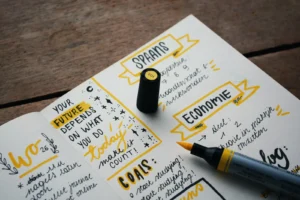UNVEILING SUGARCRETE: THE SWEET INNOVATION IN CONSTRUCTION
UncategorizedUNVEILING SUGARCRETE: THE SWEET INNOVATION IN CONSTRUCTION
- June 11, 2024
- Geeta University
Introduction
In the ever-evolving landscape of construction materials, where innovation meets sustainability, a sweet revolution is underway. Sugarcrete, also known as sugar-based concrete or sweet concrete, emerges as a promising contender in the quest for eco-friendly and resilient building solutions. With its unique composition and properties, Sugarcrete represents a paradigm shift in the construction industry, offering a blend of strength, durability, and sustainability that challenges conventional practices.
The story of Sugarcrete begins with a fundamental rethink of traditional concrete formulations. Conventional concrete, while versatile and widely used, carries a significant environmental footprint due to its high cement content. Cement production is a resource-intensive process that contributes to carbon emissions and other environmental impacts. Recognizing the need for greener alternatives, researchers and engineers have turned to innovative materials and techniques to mitigate the environmental impact of construction activities.
At the heart of this movement lies Sugarcrete, a revolutionary material that harnesses the binding properties of sugar to enhance the performance of concrete. By incorporating sugar as a key ingredient, Sugarcrete achieves multiple objectives simultaneously: reducing the carbon footprint of concrete production, enhancing structural properties, and opening up new avenues for sustainable construction practices.
The composition of Sugarcrete is a carefully calibrated blend of sugar, cement, and aggregate materials. Sugar acts as a binding agent, enhancing the cohesion of the concrete mixture while reducing the water content required for hydration. This unique combination not only improves the workability of the concrete during construction but also enhances its strength and durability over time. Through precise control of the composition and manufacturing process, engineers can tailor Sugarcrete formulations to meet specific project requirements, whether it’s for structural applications or architectural finishes.
Beyond its technical merits, Sugarcrete embodies the ethos of sustainability that is increasingly shaping the construction industry. By reducing the reliance on cement and incorporating recycled aggregates, Sugarcrete significantly reduces the carbon footprint associated with concrete production. This makes it an attractive choice for green building projects seeking to minimize environmental impact without compromising on performance.
The applications of Sugarcrete are diverse and far-reaching, spanning structural elements such as foundations, walls, and pavements, to architectural finishes including decorative panels, countertops, and flooring. Its versatility allows architects and designers to explore creative possibilities while meeting sustainability goals. Moreover, Sugarcrete’s compatibility with existing construction practices ensures seamless integration into conventional building projects, making it a practical and accessible solution for the industry at large.
However, the journey towards widespread adoption of Sugarcrete is not without challenges. Technical considerations such as setting time, compatibility with admixtures, and long-term durability require careful attention and ongoing research. Additionally, cost considerations and market acceptance may influence the adoption rate of Sugarcrete in different regions and sectors of the construction industry.
Looking ahead, the future prospects of Sugarcrete are bright as the demand for sustainable building materials continues to grow. Ongoing research and development efforts aimed at optimizing Sugarcrete formulations and addressing technical challenges will further enhance its viability and pave the way for its widespread adoption.
In this comprehensive guide, we delve into the technical intricacies of Sugarcrete, exploring its composition, properties, applications, and the potential it holds for revolutionizing the way we build. Join us on a journey to uncover the sweet innovation that is Sugarcrete, and discover how it is reshaping the future of construction, one sustainable structure at a time.
In the subsequent sections, we will explore the composition and manufacturing process of Sugarcrete, delve into its properties and sustainability profile, examine its diverse applications in construction, and discuss the challenges and considerations associated with its use. Finally, we will explore the future prospects of Sugarcrete and its role in shaping the sustainable built environment of tomorrow.
1. Understanding Sugarcrete: Composition and Manufacturing Process
1.1 Composition of Sugarcrete Sugarcrete, also known as sugar-based concrete or sweet concrete, is primarily composed of three main ingredients: sugar, cement, and aggregate materials. The proportion of each component can vary depending on the desired strength and other specific requirements of the project. Generally, the composition includes:
• Sugar: The key ingredient that distinguishes Sugarcrete from conventional concrete. Sugar acts as a binding agent, enhancing the cohesion and workability of the mixture while reducing water content.
• Cement: Portland cement is typically used in Sugarcrete formulations to provide strength and stability to the final product. The ratio of cement to sugar varies depending on the desired strength and setting time.
• Aggregates: Various types of aggregates such as sand, gravel, or crushed stone are incorporated to impart bulk and strength to the concrete mixture.
1.2 Manufacturing Process The manufacturing process of Sugarcrete follows a similar procedure to conventional concrete production, with some modifications to accommodate the addition of sugar. The key steps involved in manufacturing Sugarcrete include:
• Mixing: The sugar is first dissolved in water to form a syrup-like solution. This solution is then added to the cement and aggregate mixture during the mixing stage. The proportions are carefully controlled to ensure the desired consistency and strength of the final product.
• Curing: After pouring the Sugarcrete mixture into molds or formwork, the curing process begins. Curing is essential for allowing the concrete to gain strength and durability over time. It involves maintaining optimal temperature and humidity conditions to facilitate proper hydration of the cement.
• Finishing: Once the Sugarcrete has sufficiently cured, it undergoes finishing processes such as polishing, sealing, or applying surface treatments as per the project requirements.
2. Properties of Sugarcrete
Sugarcrete, as a novel construction material, exhibits a range of properties that distinguish it from conventional concrete. From strength and durability to sustainability, Sugarcrete offers a unique combination of attributes that make it an attractive choice for various construction applications.
Compressive Strength:
Compressive strength is a crucial property of concrete, indicating its ability to withstand axial loads or pressure. Sugarcrete demonstrates impressive compressive strength, comparable to that of conventional concrete, owing to its carefully calibrated mixture of cement, aggregates, and sugar. The addition of sugar enhances the binding properties of the mixture, resulting in improved cohesion and reduced water content. This contributes to higher compressive strength, making Sugarcrete suitable for structural applications such as foundations, walls, and columns.
Flexural Strength:
Flexural strength, also known as bending strength, measures the ability of a material to resist bending or deformation under applied loads. Sugarcrete exhibits excellent flexural strength, allowing it to withstand bending stresses and distribute loads effectively. This property is particularly important in structural elements such as beams, slabs, and pavements, where flexural strength plays a critical role in ensuring structural integrity and durability.
Durability:
Durability is a key consideration in construction materials, especially in harsh environmental conditions or exposure to aggressive agents such as moisture, chemicals, and freeze-thaw cycles. Sugarcrete offers exceptional durability, thanks to its dense and homogenous microstructure. The incorporation of sugar enhances the hydration process of cement, resulting in a more uniform and denser concrete matrix that resists cracking and deterioration over time. This enhanced durability makes Sugarcrete suitable for outdoor applications such as pavements, sidewalks, and driveways, where exposure to environmental factors is a concern.
Workability:
Workability refers to the ease with which a concrete mixture can be placed, compacted, and finished during construction. Sugarcrete exhibits excellent workability, owing to the unique properties of sugar as a binding agent. The addition of sugar reduces the water demand of the concrete mixture, resulting in a more cohesive and manageable material that is easier to handle and manipulate on-site. This improved workability enhances construction efficiency and allows for the creation of complex shapes and designs with ease.
Setting Time:
Setting time is the duration required for concrete to achieve initial and final set, indicating the transition from a plastic to a rigid state. Sugarcrete may exhibit slightly altered setting times compared to conventional concrete due to the presence of sugar. The sugar accelerates the hydration process of cement, leading to faster initial setting times in some cases. However, the overall setting time can be controlled through precise adjustment of the mixture composition and curing conditions. Proper management of setting time is crucial to ensure optimal workability and quality of the finished structure.
Sustainability:
From an environmental perspective, Sugarcrete offers significant sustainability benefits compared to conventional concrete. By reducing the reliance on cement and incorporating recycled aggregates, Sugarcrete helps minimize the carbon footprint associated with concrete production. The use of sugar as a renewable and biodegradable binding agent further enhances its eco-friendly credentials. Additionally, Sugarcrete can contribute to green building certifications such as LEED (Leadership in Energy and Environmental Design) by meeting criteria related to sustainable materials, resource efficiency, and indoor environmental quality.
Fire Resistance:
Fire resistance is an important property in building materials, especially in structures where fire safety is a primary concern. Sugarcrete exhibits excellent fire resistance due to its dense and compact composition. The presence of sugar does not compromise the fire performance of Sugarcrete, as it undergoes combustion during exposure to high temperatures, leaving behind a stable and fire-resistant concrete matrix. This property makes Sugarcrete suitable for a wide range of fire-rated applications, including walls, partitions, and structural elements requiring fire protection.
In summary, Sugarcrete offers a compelling combination of properties that make it a versatile and sustainable choice for construction projects. From its impressive strength and durability to its enhanced workability and sustainability profile, Sugarcrete represents a sweet innovation in the world of building materials, paving the way for greener and more resilient structures. As the construction industry continues to prioritize sustainability and innovation, Sugarcrete stands poised to play a significant role in shaping the future of sustainable building practices.
3. Applications of Sugarcrete in Construction
3.1 Structural Applications Sugarcrete finds applications in a wide range of structural elements, including:
• Foundations: Sugarcrete’s strength and durability make it suitable for foundation construction, providing a stable base for buildings and other structures.
• Walls and Columns: Sugarcrete can be used to cast walls and columns, offering structural support while maintaining design flexibility.
• Pavements and Walkways: The durability of Sugarcrete makes it an ideal choice for pavements, sidewalks, and other outdoor surfaces subjected to heavy foot traffic.
3.2 Architectural Finishes Beyond structural applications, Sugarcrete offers versatility in architectural finishes, allowing for creative design possibilities. Some common applications include:
• Decorative Panels: Sugarcrete can be molded into decorative panels with intricate designs, adding aesthetic appeal to interior and exterior spaces.
• Countertops and Vanities: The smooth finish and durability of Sugarcrete make it suitable for crafting countertops, vanities, and other custom surfaces in residential and commercial settings.
• Flooring: Sugarcrete flooring provides a seamless and durable option for both indoor and outdoor spaces, offering a customizable alternative to traditional flooring materials.
4. Challenges and Considerations
Despite its promising properties and potential applications, Sugarcrete is not without its challenges and considerations. Addressing these challenges is essential for maximizing the effectiveness and widespread adoption of this innovative construction material. Let’s delve into some of the key challenges and considerations associated with Sugarcrete:
Setting Time Management:
One of the primary challenges with Sugarcrete is managing its setting time effectively. The addition of sugar to the concrete mixture can accelerate the hydration process of cement, potentially leading to shorter setting times. While this may offer advantages in terms of construction efficiency, it also requires careful monitoring and adjustment to ensure adequate workability and placement of the material. Failure to manage setting time appropriately can result in premature setting, affecting the quality and performance of the finished structure.
Compatibility with Admixtures:
Sugarcrete formulations may interact differently with chemical admixtures commonly used in concrete, such as water reducers, air entrainers, and accelerators. The presence of sugar in the mixture can influence the performance of these admixtures, affecting properties such as workability, setting time, and strength development. Compatibility testing is essential to evaluate the interaction between Sugarcrete and various admixtures, ensuring that they function as intended without compromising the overall performance of the concrete.
Long-Term Durability:
While Sugarcrete exhibits impressive initial strength and durability, its long-term performance under different environmental conditions and exposure scenarios requires further evaluation. Factors such as freeze-thaw cycles, chemical exposure, and environmental degradation can impact the durability of Sugarcrete over time. Research and testing are necessary to assess the long-term durability of Sugarcrete formulations and identify any potential weaknesses or vulnerabilities that may arise in real-world applications.
Cost Considerations:
The cost of Sugarcrete may vary depending on factors such as the availability of raw materials, production processes, and market dynamics. While the use of sugar as a binding agent offers sustainability benefits, it may also incur additional costs compared to conventional concrete formulations. Moreover, the availability and pricing of sugar can be subject to fluctuations in the agricultural market, potentially impacting the overall cost of Sugarcrete production. Assessing the cost-effectiveness of Sugarcrete relative to its performance and sustainability benefits is crucial for decision-making in construction projects.
Market Acceptance and Education:
Introducing a novel construction material like Sugarcrete into the market requires overcoming challenges related to market acceptance and education. Construction professionals, including architects, engineers, contractors, and developers, may have limited awareness or understanding of Sugarcrete and its potential benefits. Educating stakeholders about the properties, performance, and applications of Sugarcrete is essential for fostering acceptance and encouraging its adoption in construction projects. Demonstrating successful case studies and providing technical support and training can help build confidence and trust in the use of Sugarcrete within the industry.
Regulatory Compliance and Standards:
Sugarcrete must comply with relevant regulatory requirements and industry standards governing the use of construction materials. This includes adherence to building codes, standards for material performance and durability, and environmental regulations. Ensuring that Sugarcrete formulations meet regulatory compliance is essential for securing approvals and certifications for construction projects. Additionally, establishing industry standards and specifications specific to Sugarcrete can provide guidance and assurance to stakeholders regarding its quality and performance.
While Sugarcrete offers promising advantages in terms of strength, durability, and sustainability, addressing the associated challenges and considerations is essential for its successful implementation in construction projects. Effective management of setting time, compatibility with admixtures, long-term durability assessment, cost considerations, market acceptance, and regulatory compliance are key factors that must be carefully addressed to unlock the full potential of Sugarcrete as a sustainable and innovative construction material. Through ongoing research, testing, education, and collaboration across the construction industry, Sugarcrete can overcome these challenges and emerge as a viable solution for building greener and more resilient structures.
5. Future Prospects and Conclusion
5.1 Future Prospects As the construction industry continues to prioritize sustainability and innovation, the demand for alternative building materials like Sugarcrete is expected to grow. Ongoing research and development efforts aimed at optimizing Sugarcrete formulations and addressing technical challenges will further enhance its viability and widespread adoption.
5.2 Conclusion In conclusion, Sugarcrete represents a sweet innovation in the world of construction materials, offering a unique blend of strength, durability, and sustainability. By harnessing the binding properties of sugar and combining them with traditional concrete components, Sugarcrete opens up new possibilities for eco-friendly construction practices without compromising on performance. As awareness of environmental concerns continues to rise, Sugarcrete stands poised to play a significant role in shaping the future of sustainable building technologies.
In essence, Sugarcrete embodies the sweet spot where innovation meets sustainability, paving the way for a greener and more resilient built environment.

Admission Open 2024-2025
For Your bright Future
Heading
If you are a good listener and can provide solutions for people’s problems, a life coach is the perfect business idea for you. You can do this face to face, through a podcast, on YouTube or other video streaming platforms, etc.
We have shortlisted trendy business ideas for fresh MBA graduates. These ideas suit the respective best MBA courses. Most of these ideas do not require huge investment and ensure quicker ROI on the business. Start today your journey of entrepreneurship with one of these business ideas.
Heading
If you are a good listener and can provide solutions for people’s problems, a life coach is the perfect business idea for you. You can do this face to face, through a podcast, on YouTube or other video streaming platforms, etc.
We have shortlisted trendy business ideas for fresh MBA graduates. These ideas suit the respective best MBA courses. Most of these ideas do not require huge investment and ensure quicker ROI on the business. Start today your journey of entrepreneurship with one of these business ideas.
Heading
If you are a good listener and can provide solutions for people’s problems, a life coach is the perfect business idea for you. You can do this face to face, through a podcast, on YouTube or other video streaming platforms, etc.
We have shortlisted trendy business ideas for fresh MBA graduates. These ideas suit the respective best MBA courses. Most of these ideas do not require huge investment and ensure quicker ROI on the business. Start today your journey of entrepreneurship with one of these business ideas.
Heading
If you are a good listener and can provide solutions for people’s problems, a life coach is the perfect business idea for you. You can do this face to face, through a podcast, on YouTube or other video streaming platforms, etc.
We have shortlisted trendy business ideas for fresh MBA graduates. These ideas suit the respective best MBA courses. Most of these ideas do not require huge investment and ensure quicker ROI on the business. Start today your journey of entrepreneurship with one of these business ideas.
Heading
If you are a good listener and can provide solutions for people’s problems, a life coach is the perfect business idea for you. You can do this face to face, through a podcast, on YouTube or other video streaming platforms, etc.
We have shortlisted trendy business ideas for fresh MBA graduates. These ideas suit the respective best MBA courses. Most of these ideas do not require huge investment and ensure quicker ROI on the business. Start today your journey of entrepreneurship with one of these business ideas.
Conclusion
If you are a good listener and can provide solutions for people’s problems, a life coach is the perfect business idea for you. You can do this face to face, through a podcast, on YouTube or other video streaming platforms, etc.
We have shortlisted trendy business ideas for fresh MBA graduates. These ideas suit the respective best MBA courses. Most of these ideas do not require huge investment and ensure quicker ROI on the business. Start today your journey of entrepreneurship with one of these business ideas.









